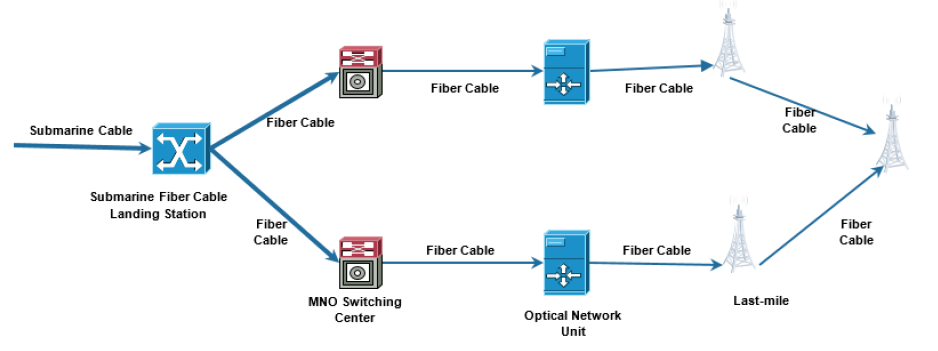


Indian Journal of Science and Technology
Year: 2021, Volume: 14, Issue: 4, Pages: 297-309
Original Article
Owusu Nyarko-Boateng1*, Adebayo F Adekoya1, Benjamin A Weyori1
1Department of Computer Science and Informatics, the University of Energy and Natural Resources, Sunyani, Ghana
*Corresponding Author
Email: [email protected]
Received Date:04 November 2021, Accepted Date:29 December 2021, Published Date:02 February 2021
Failures mostly occur in the underground optical networks, and these failures come with some consequences such as interrupted services, damaged brand reputation, revenue loss, and subscribers churn. Several fault tracing techniques in optical networks, notably OTDR, OFDR, T-OTDR, among many others have been developed, but their main challenge has been the impreciseness of failure location measurements. These challenges resulted in delays in the fault tracing processes. This paper provides a solution to the identified challenge by designing a predictive model to determine the damaged underground fiber cable’s exact location. We collected datasets comprising the OTDR measurements, the number of spliced joints, the number of enclosure boxes, and the wells (chambers) along the failed underground optical transmission path. We adopted an LSTM deep learning predictive model to find the exact distance of failure in the underground optical networks. Using deep learning predictive models to tracing faults has been deployed in many network and transmission systems such as routing, fault management, link optimization, modulation, etc. However, tracing failures in underground optical networks has not yet received much attention, according to literature. Hence, the motivation to design an intelligent predictive model based on the LSTM deep learning technique to predict the exact location of failure in underground optical networks. Our study performed very well with high accuracy of 0.00016673. This result signifies that the predictive model could promptly predict the exact spot of failures in underground optical networks. This is the first time an LSTM model has been used to accurately predict the precise location of failures in underground optical networks. In addition, a computational algorithm was developed as a supporting feature to enhance the performance of the intelligent model.
Keywords: Fiber cable cuts; fault tracing; underground optical networks; LSTM; predictive model
© 2021 Nyarko-Boateng et al.This is an open access article distributed under the terms of the Creative Commons Attribution License, which permits unrestricted use, distribution, and reproduction in any medium, provided the original author and source are credited. Published By Indian Society for Education and Environment (iSee)
Subscribe now for latest articles and news.